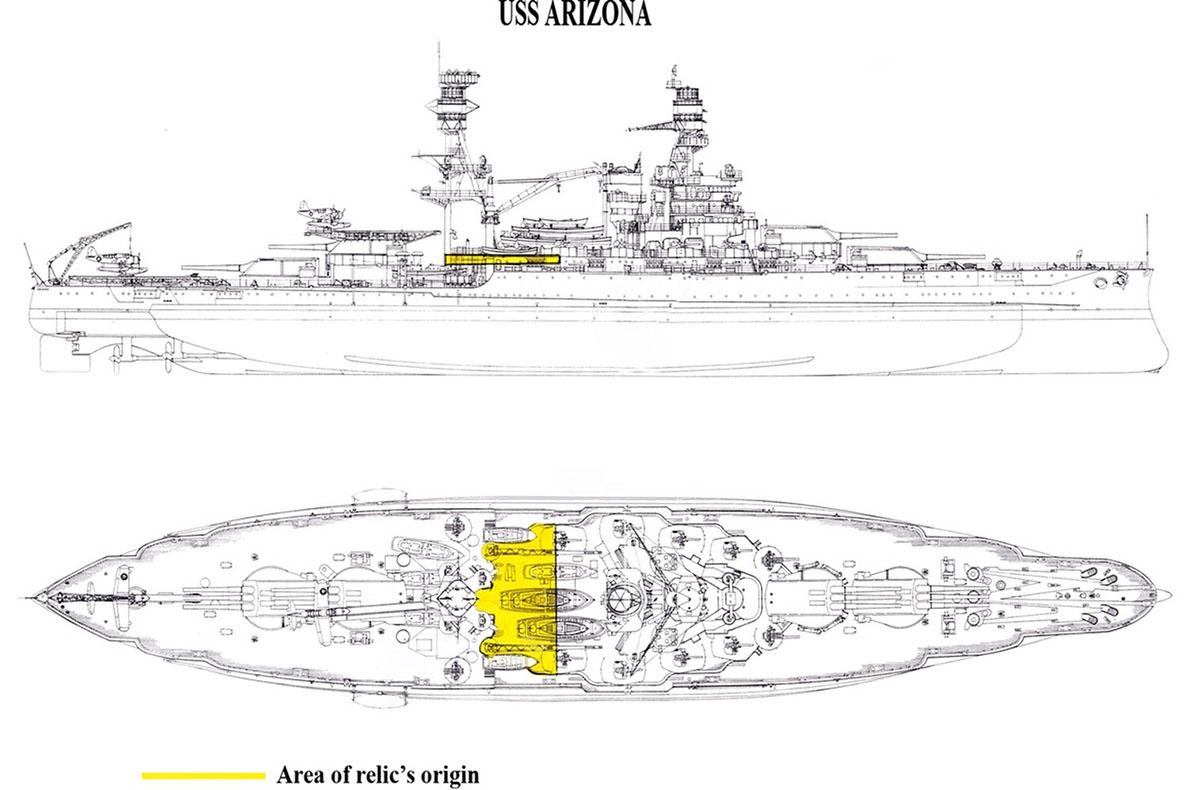
A Sacred Site for Reflection, Mourning
BY ELIAS BARBOZA
PHOTOGRAPHY BY COURTESY
May 21, 2021
Every Dec. 7 since 2013, Cal State East Bay's Concord campus hosts a Pearl Harbor Remembrance Day event. The ceremony brings Pearl Harbor survivors and their families together to light the Mount Diablo beacon, a rotating lantern installed in 1928 to assist transcontinental aviation.
“Exhibits like this not only teach the history of a specific event; they also serve as sacred sites for subsequent generations, providing space for reflection and public mourning.”
Due to the campus’ efforts behind the annual event, the United States Navy chose the Concord campus as a site to display a fragment of the USS Arizona, one of seven U.S. battleships sunk during the attack on Oahu on December 7, 1941. Scheduled for display in 2022 in the Concord Campus main lobby, the artifact is intended to become a central portion of a rotating exhibit highlighting student research on the history of the Pacific War and the lessons of its human toll.
“Exhibits like this not only teach the history of a specific event; they also serve as sacred sites for subsequent generations, providing space for reflection and public mourning,” said Concord campus Director Robert Phelps. “The exhibit is representative of the sacrifice made by US servicemen and women throughout the war, as well as the awful price paid by citizens of all nations during the conflict.”
The historic relic is a two-foot by three-foot portion from the USS Arizona's boat deck and will be displayed alongside interpretive graphics designed in part by Cal State East Bay students. It will also serve as a gathering place for war veterans and their guests prior to the annual beacon lighting.
A partner website for the artifact, also known as a “digital exhibit,” tells the story of the USS Arizona and her crew. It’s an ongoing project displaying student research on the war, not only in regards to Pearl Harbor but also topics related to the wartime "homefront," as Contra Costa County is home to the Port Chicago National Historic Site and the Rosie the Riveter National Historic Site.
Naval forensic experts believe a bomb detonated near the boat deck moments before another bomb penetrated the forward magazine, the area where ammunition is stored. The battleship was destroyed, killing 1,177 of its 1,512 crew. USS Arizona's casualties made up a majority of those killed during the Pearl Harbor attack.
Although most of the USS Arizona lays at the bottom of Pearl Harbor, the Navy possesses several tons of the ship that were cut away during rescue and salvage operations after the attack, for their historical importance. Most have not been seen by the public. In order to obtain a specific fragment, recipients are required to promise that it be properly displayed. The Concord campus is currently in possession of the artifact while planning for its unveiling next year.
Housing and displaying the USS Arizona artifact will be the first project in an ongoing mission to exhibit educational materials focused on wartime history, Phelps said. Future plans for expanding the exhibit include information on Contra Costa County’s involvement during the second world war, and a spotlight on the 59,000 army nurses and 14,000 navy nurses who served during it.
“We hope to continue to develop the Concord campus as the center of higher education in Contra Costa County, as well as a site for multiple educational and cultural events throughout the year,” said Phelps. “This exhibit, and the Dec. 7 remembrance ceremony, is just one example of this effort.”
For more information on the exhibit visit the Concord Campus Pacific War Exhibit website.
Share this story